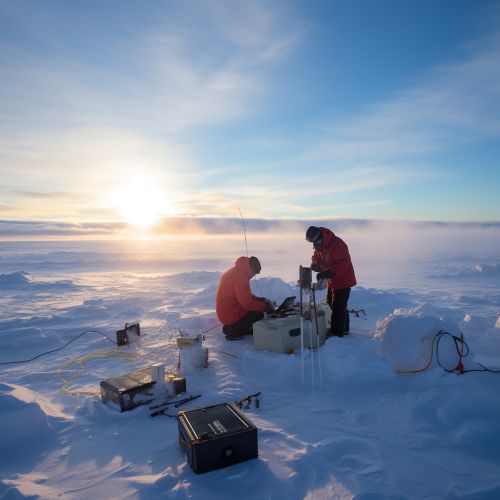Meteorology
Introduction
Meteorology is the scientific study of the atmosphere and atmospheric phenomena, as well as the atmospheric effects on the Earth's weather and climate. It involves the application of the principles of physics, chemistry, and mathematics to explain weather patterns and climatic trends. Meteorologists, the scientists who study meteorology, use sophisticated technology and scientific principles to forecast weather conditions and understand the processes that drive our climate.
History of Meteorology
The history of meteorology dates back to ancient times when early civilizations observed and recorded weather phenomena. The ancient Greeks were the first to establish meteorology as a science. The term "meteorology" itself comes from the Greek word "meteoros", which means 'high in the sky'. The Greek philosopher Aristotle wrote a treatise called "Meteorologica" in 340 BC, which is considered one of the earliest comprehensive studies on weather phenomena.


The development of meteorology as a science, however, was slow until the invention of scientific instruments like the thermometer and the barometer in the 17th century. The 19th century saw significant advancements with the establishment of weather stations and the development of telegraphy, which allowed for the rapid exchange of weather information across long distances.
Atmospheric Composition and Structure
The Earth's atmosphere is composed primarily of nitrogen (78%) and oxygen (21%), with small amounts of other gases such as argon, carbon dioxide, and trace gases. The atmosphere is divided into several layers based on temperature variations. These layers, from the Earth's surface upwards, are the troposphere, stratosphere, mesosphere, thermosphere, and exosphere.


The troposphere is the lowest layer of the atmosphere where all weather phenomena occur. Above the troposphere is the stratosphere, which contains the ozone layer that absorbs most of the Sun's harmful ultraviolet radiation. The mesosphere, thermosphere, and exosphere are the upper layers of the atmosphere, extending into space.
Weather and Climate
Weather refers to the state of the atmosphere at a particular place and time, characterized by parameters such as temperature, humidity, wind speed and direction, and precipitation. Weather phenomena include events like rain, snow, storms, and hurricanes. Weather forecasting involves predicting these conditions based on observations and mathematical models.
Climate, on the other hand, is the average weather conditions in a region over a long period, typically 30 years. It includes the study of long-term weather patterns and trends. Climatology, a branch of meteorology, is dedicated to the study of climate.


Meteorological Instruments and Technology
Meteorologists use a variety of instruments and technologies to measure and monitor atmospheric conditions. These include thermometers for measuring temperature, barometers for atmospheric pressure, anemometers for wind speed, and hygrometers for humidity. Weather balloons, also known as radiosondes, are used to collect data from the upper atmosphere.
Weather satellites provide valuable data about the Earth's atmosphere, oceans, and land surfaces. They help in monitoring large-scale air movements, cloud patterns, weather systems, and other meteorological phenomena. Weather radar is another important tool used to detect and track weather systems, particularly severe weather such as thunderstorms and hurricanes.
Meteorological Phenomena
Meteorological phenomena encompass a wide range of weather events, from common occurrences like rain and snow to extreme events like hurricanes, tornadoes, and blizzards. These phenomena are driven by the complex interplay of atmospheric conditions, including temperature, pressure, humidity, and wind patterns.


Some meteorological phenomena, such as the greenhouse effect and El Niño, have significant impacts on global climate patterns. Understanding these phenomena is crucial for predicting weather and climate trends, and for mitigating the impacts of climate change.
Meteorology and Climate Change
Meteorology plays a crucial role in the study of climate change. Meteorologists study long-term trends in weather patterns and atmospheric conditions to understand how the Earth's climate is changing. They use complex mathematical models to predict future climate scenarios based on different greenhouse gas emission scenarios.
Climate change research involves the study of various indicators such as global temperature, sea level rise, ice melt, and changes in precipitation patterns. Meteorological data is crucial for validating these models and for monitoring the impacts of climate change.


Conclusion
Meteorology is a vital science that impacts many aspects of our lives, from daily weather forecasts to long-term climate change predictions. It is a complex field that requires a deep understanding of many scientific disciplines, including physics, chemistry, and mathematics. As our climate continues to change, the role of meteorology in understanding and predicting these changes will only become more important.
